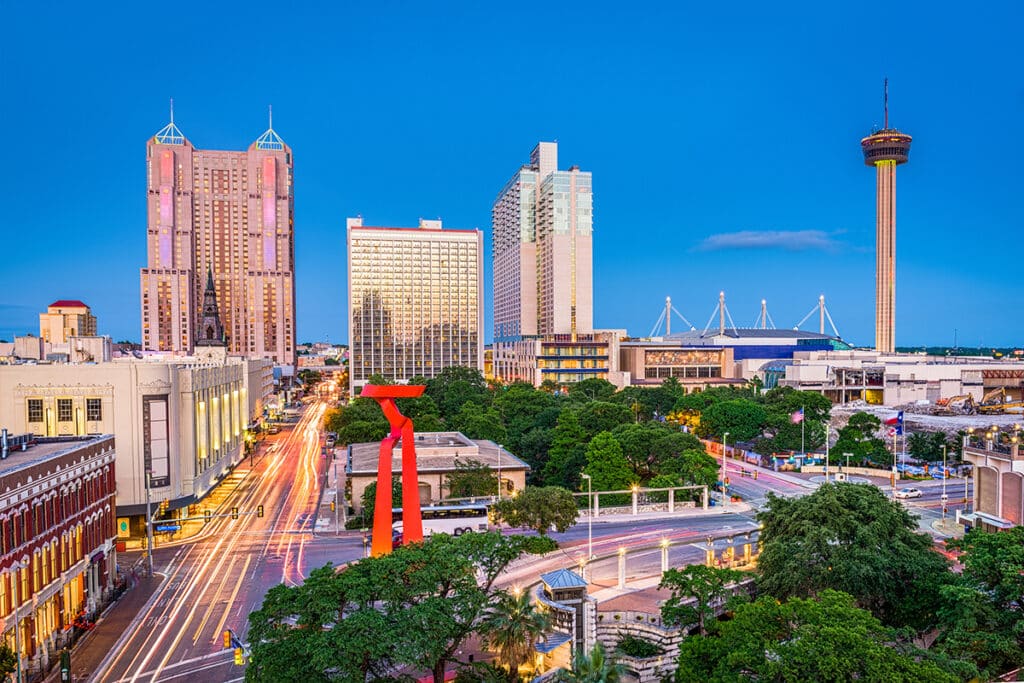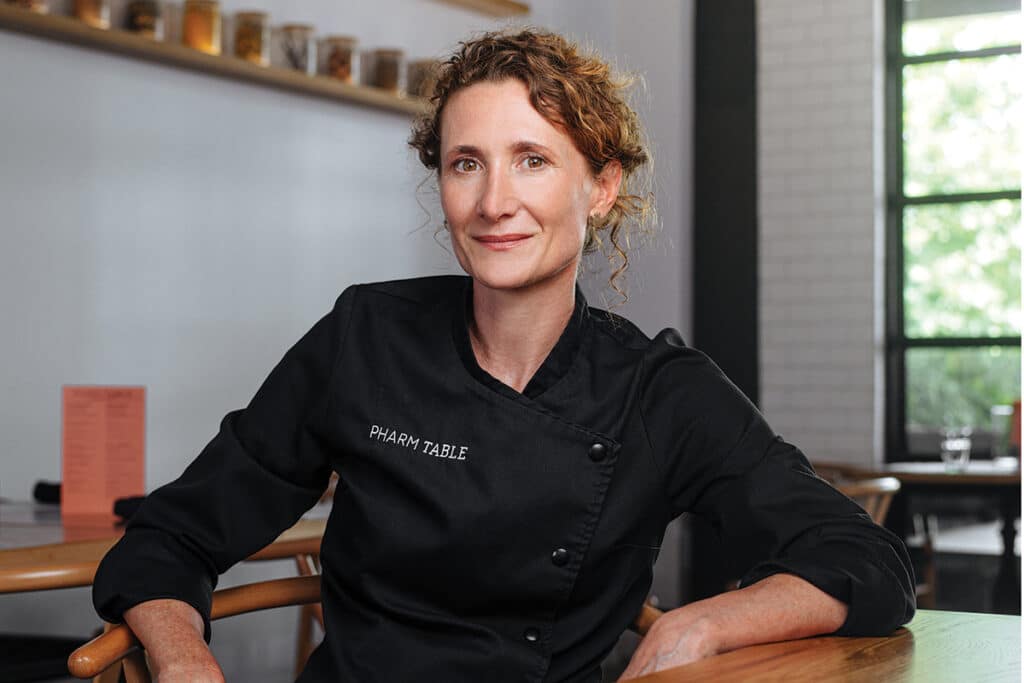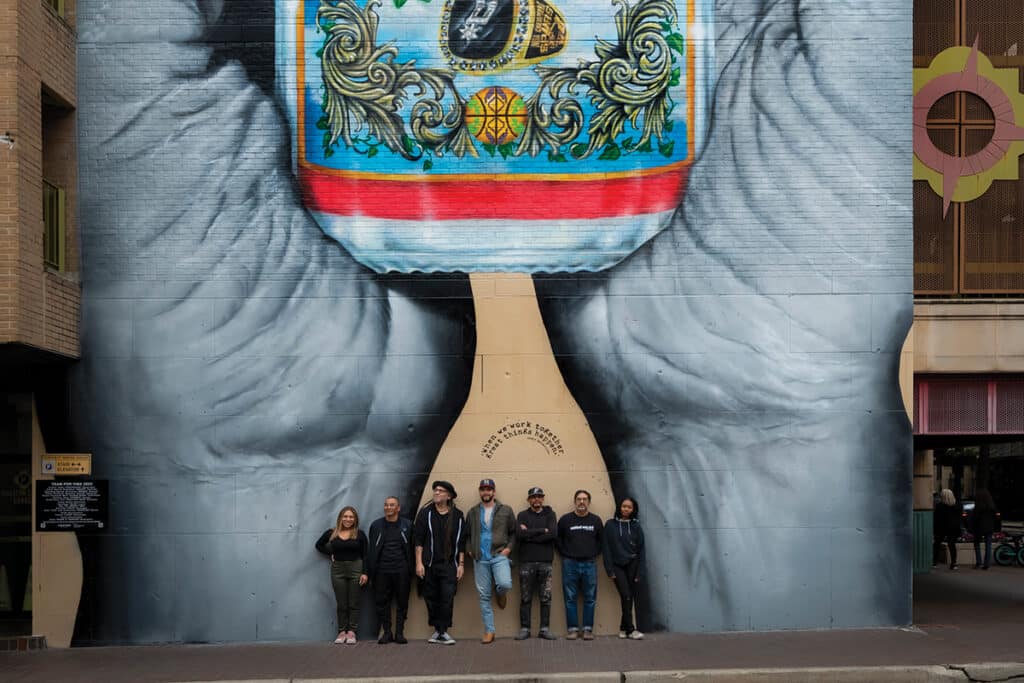
Marion Koogler McNay was 59 when she made the decision to turn her home and her art collection into the first modern art museum in Texas. Though she had always been interested in art — and was, in fact, an artist herself — until 1942 she mostly bought art to enjoy in her own magnificent Sunset Hills villa. The decision made, however, Mrs. McNay — as she wanted to be called — spent the last eight years of her life making detailed plans for her bequest. The now familiar museum opened in 1954, four years after her death, with a collection of 700 artworks. This year, the McNay, which today owns more than 20,000 items, has been celebrating its 60th anniversary and remembering its founder with nonstop activity, special events and three major exhibits. The latter were planned “to reflect different strengths of our collection,” says the museum’s director, William Chiego, referring to the entirety of present-day holdings, which include post-WWII art and contemporary art.
The postwar period was represented by the Whitney Museum-organized exhibit Robert Indiana: Beyond LOVE, a retrospective of the seminal American artist of the 1960s and ‘70s, whose work embraced images from pop culture and advertising. That was followed by Beauty Reigns: A Baroque Sensibility in Recent Painting, a show that originated at the McNay, and focused on the most dazzling side of contemporary art through the works of 13 living abstract painters. It later traveled to Akron, Ohio. But the exhibit that reflects the taste and interest of the founder is the current Intimate Impressionism, drawn from the extensive holdings of the National Gallery of Art in Washington, D.C. With nearly 70 works by the most famous Impressionists and post-Impressionists, such as Monet, Renoir, Gauguin, Degas, Van Gogh, Pissaro, Bonnard and others, it is the largest exhibit of this kind ever to come to San Antonio. At the press preview, National Gallery curator Mary Morton explained that the name refers to the scale and nature of the paintings. Originally purchased by industrialist Andrew Mellon’s children, Ailsa Mellon Bruce and Paul Mellon for their own homes, the paintings tend to be smaller in size to fit a domestic environment. The depicted images — interiors, friends, pets, still-lifes, picnics and country scenes — also have an intimate feel about them.
Impressionism originated in Paris as a new art movement following the Franco-Prussian war of 1870 and the Paris Commune. Tired of war and turmoil, ordinary people and artists alike wanted to start enjoying life again. These artists took their paints and easels outdoors to sketch the scenes around them. “They made a huge break with the past,” says Chiego. “They painted outdoors in natural light, more freely and with brighter colors. They were interested in light and how light affects your perception. They also painted scenes of ordinary life. No more ancient history and religious themes. The subject matter became more personal.” Their brush technique was also very different. Aiming to capture the artist’s perceptual impression of reality rather than reproduce detailed renderings of it, the Impressionists worked with sketchy, short brushstrokes that imparted a characteristic softness to their images. The French art establishment frowned on their work, but American collectors became passionate about it, buying their art early on, ahead of the French museums.
Influenced by art dealers extraordinaire Dalzell and Ruth Hatfield, Marion McNay became one of those enlightened collectors. According to her biographer, Lois Wood Burkhalter, the Los Angeles-based Hatfields would frequently stop in San Antonio to show her their newest acquisitions of French art. Many of the Intimate Impressionism artists can be found in her original collection, including Gauguin, Van Gogh, Cezanne and Bonnard.“It’s the perfect show for the McNay,” observes Chiego, who worked with the National Gallery for four years to get the Mellons’ paintings to San Antonio during the anniversary year. “Mrs. McNay and Ailsa Mellon Bruce had very similar taste; both liked works that show the artist’s hand. Mrs. Bruce’s collection was bigger, but Mrs. McNay’s was edgier, more aggressively pointing toward the 20th century.”
She was all about art
Marion Koogler was almost 35 when she married her first husband, Don McNay, in 1917 and moved with him from Ohio to Laredo, Texas, where he assumed his Army duties. Her biographer refers to the months spent in Laredo as “the happiest of Marion Koogler’s life.” Sadly, Don died 10 months after the wedding of an illness he contracted in Florida. The widow would go on to marry four more times, but all four unions ended in divorce. Mrs. McNay’s connection to San Antonio dates back to the time of her brief first marriage. Following the Laredo period, the Army transferred Don to Florida, but military restrictions prevented his wife from accompanying him. They traveled together to San Antonio, however, and stayed at the Menger Hotel in Alamo Plaza. When it was time for Don to leave, the couple parted in front of the Alamo. Years later, memories brought Marion back to the Alamo City, where she eventually met her third husband and built the mansion that became San Antonio’s most attractive museum. Thanks to the oil income generated by her father’s Kansas lands, she had no financial worries. Always generous with family and friends, she also helped and supported both budding and established artists. A companion 60th anniversary exhibit at the museum, School at Sunset Hills: San Antonio Artists in the McNay Collection, documents the first decade of operation of the San Antonio Art Institute, a community art school that lasted for decades.
Originally founded in 1927 by the Witte Memorial Museum and the San Antonio Art League, the school was invited to use the Sunset Hills residence after falling on hard times following WWII. The lady of the house taught there, paid the instructors, encouraged the students and provided scholarships for advanced training for the most promising talents. Some of the works in the exhibit were part of the original bequest, including watercolors by Cecilia Steinfeldt, whom many San Antonians will remember as a long-time curator at the Witte. It is also a rare chance to see three watercolors by the founder herself. For those who would like to see what this exceptional woman looked like, a pensive bust of her as a young person stands in the so-called Orientation Room. The sculptor is unknown, but some have believed that it is a self-portrait. “She was all about art,” remarkes Chiego. “She studied art, she loved art, and she taught art. And she started collecting as early as the 1920s. As a painter, she mostly did watercolors, and she also collected American watercolorists.”
Complementing the 60th anniversary offerings is yet another smaller show, Manet to Gauguin: French Masterworks on Paper, entirely drawn from the McNay’s own print collection.
It is safe to say that the founder would be surprised and enormously pleased to see what her gift to San Antonio has become. Today some 150,000 people visit the 23-acre complex where outdoor sculptures enliven the park-like landscape and new buildings house both permanent holdings and special shows. Since Chiego took the helm in 1991, the collection has doubled in size. And he’s already looking ahead.
“Part of the celebration has been thinking about the future,” he says. “We are beginning to create a master plan for the next 20 years. We want to preserve the green oasis that we have but make it more pedestrian-friendly, more like a park, so that visitors can have easy access to the sculptures. Sculpture has been a big expansion area. We are, of course, still acquiring works from the 19th and 20th centuries, and the theater arts collection continues to grow, now focusing more on contemporary theater design. Our founder wanted to encourage the contemporary artists of her time, so that is still part of our mission. We have made a big effort in the contemporary art area.”




